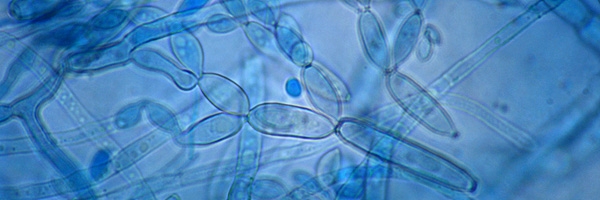
Cladosporium cucumerinum Ellis and Arthur, (1889)
Cucumber scab
- classification : Fungi, Ascomycota, Dothideomycetes, Dothideomycetidae, Capnodiales, Davidiellaceae
- Teleomorph: Davidiella Crous & U. Braun, (2003)
- synonymie : Cladosporium cucumeris A.B. Frank, (1893)
- English name: cucumber scab
Cladosporium cucumerinum is widely distributed in the world since it is found in many countries on several continents: Europe, America, Africa, Asia . It should be noted that its attacks are particularly serious in cold and humid production areas, particularly in North America and Europe. It affects many cucurbits, most often in the open field, causing leaf symptoms, but also on stems and fruits. Its damage can be particularly serious, in particular when the attacks are early and affect young fruits. Thus, the mature fruits subsequently exhibit longitudinal and corky cracks, of variable size, giving them poor commercial quality.
Many species of Cucurbitaceae are susceptible to leaf blight. Cucumber, melon, zucchini, winter and summer squash, pumpkins, watermelon (indicated by some authors as not very sensitive), pumpkin ... can be attacked more or less seriously. Note that this is less and less the case for cucumber and pickle because many varieties marketed are now resistant.
In France , cladosporiosis is particularly prevalent on melon (in the West and South-West), and zucchini (in the Center region). Attacks can take place in the nursery as well as in the open field. Note that this disease seems to be on the rise in recent years.





